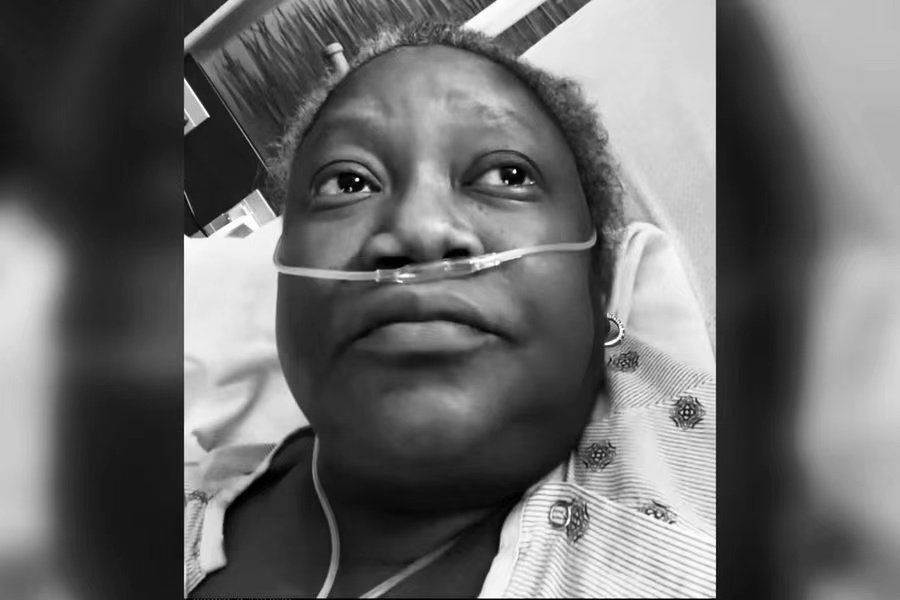The COVID-19 epidemic in the United States continues to worsen, and there is a shortage of medical resources everywhere, of which people of color are often the biggest victims.
December 23rd local time, the New York Times reported that an African-American patient died of negative treatment in a hospital after contracting the novel coronavirus, which was very heartbreaking.
Susan Moore, a former doctor, quickly deteriorated after being diagnosed with COVID-19 on November 29 and was taken to Indiana University North Hospital for treatment.
During this period, Moore suffered from severe neck pain and dyspnea, and chest CT also detected pulmonary infiltration and lymph node disease.
However, white nurses and attending doctors refused to provide painkillers and said that Moore should go home for rest. Moore then recorded a video expressing the discrimination he had suffered during his hospitalization, and then posted the video to social media.
In the video, Moore once said that she was suffering from huge neck pain, and her attending doctor spoke like a drug addict, although she knew that she did not usually rely on any painkillers.
After suffering from this treatment, Moore felt more painful. Moore also insisted that if he was white, he did not have to bear these. Many African-Americans died of COVID-19 because they were refused admission and sent home while not knowing how to face the disease by themselves.
So Moore believes that it is necessary to tell the truth, whether through the media or anyone, to let people know what happened here.
As an internist, Moore had to frequent hospital visits due to pulmonary sarcoidosis before contracting the novel coronavirus. She has experienced and witnessed too many African-Americans encountering negative treatment.
Moore’s son said that every time his mother went to the doctor, she had to struggle to get the most basic and appropriate treatment. Moore was sent back to his home on December 7, and his condition quickly deteriorated.
After returning to hospital on December 10, Moore has been relying on a ventilator to barely survive. Moore died of illness on December 20th local time. Moore’s experience was made to be booed after the local media reported.
A report released by the U.S. Centers for Disease Control and Prevention on November 30 shows that the mortality rate of different ethnic groups has shown great differences in the COVID-19 epidemic.
Among them, the Indian mortality rate is 2.6 times that of white people, and the death rate of African and Hispanics is 2.8 times that of white people. The New York Times believes that racial discrimination is the root cause behind this phenomenon.
North America observes the death of an African-American female doctor that ignites the topic of medical racial discrimination.
In 2020, racial discrimination-induced protests swept across the United States, especially the news that white police brutalized blacks was particularly interesting.
On the 23rd, Susan Moore, an African-American woman,’s medical treatment once again became a hot news, which also triggered a debate about medical racial discrimination.
African-American female doctor died after revealing that she was delayed treatment.
Susan Moore was a doctor during her lifetime. She was hospitalized after contracting the novel coronavirus. But she said that she had been discriminated against by white doctors and nurses during her hospitalization.
Doctors thought her health was fine, ignored the symptoms described by Moore, and forced her to be discharged from the hospital. Moore recorded a video in anger and posted it on his social account. She said, “If I were white, I wouldn’t have experienced this.”
Moore was forced to leave the hospital on December 7, but she still felt tired and breathing heavily, and was sent to another hospital 12 hours later. At that time, she had a high fever of 39.4 degrees Celsius, her blood pressure plummeted to 80/60, and her heartbeat was 132 beats per minute.
On December 10, the doctor intubated her to a ventilator, and Moore gradually fell into a coma. On the 20th, her heart stopped beating.
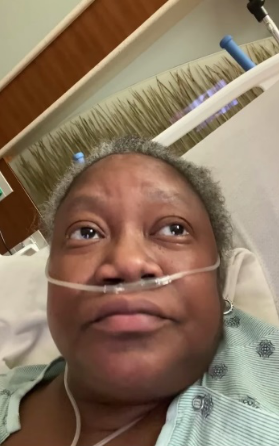
Moore’s story was reported by the mainstream media in the United States, and her misfortune caused public anger.
Many netizens left messages accusing white doctors and the hospital of “racist acts”, and some people also said that they or their relatives were discriminated against because of their color when they were hospitalized (pictured below).
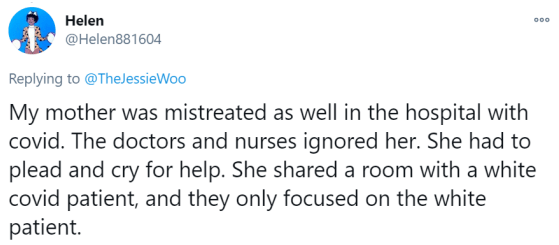
American Medical Association: Racism is a serious threat to American public health
The mainstream media in the United States generally point out that African-Americans have suffered from long-term inequality in health care, especially the greater losses suffered in the COVID-19 epidemic.
CBS News reported that “Moore’s encounters have become common among black Americans.
The COVID-19 pandemic has hit the black community hard, with black people 4.7 times more likely to be hospitalized and three times more likely to die than white people due to COVID-19.”
USA Today reports that Moore’s experience has triggered anger and sadness on social media.
Many people point out that this is the latest example of racism and health care discrimination.
Last month, the American Medical Association (AMA), the largest medical organization in the United States, issued a statement saying that racism is “a serious threat to public health in the United States, a serious threat to promoting health equity, and an obstacle to people’s access to appropriate medical services”, mainly in three aspects:
Systematic racism: structural and legalized systems that result in “marginalized populations” have unequal access to goods and services, including health care services.
Cultural racism: solidifying negative and harmful racial images in the media and the dissemination of ideas.
Interpersonal racism: racial prejudices, either explicit or implicit, including clearly expressed racist beliefs and implicitly held racist attitudes, and actions based on or derived from these prejudices.
Tearing exists in people’s hearts
Many studies have shown that there are structural and systemic inequalities in the United States, and racial inequality is also one of them.
But if Susan Moore’s misfortune ends with a passionate condemnation of racial discrimination, it may simplify the complexity of American social problems.
Some netizens found that Bannic, a white doctor who treats Moore, has a low score, and many patients complain that the doctor treats patients rudely, arrogantly and unprofessionally (the picture below).
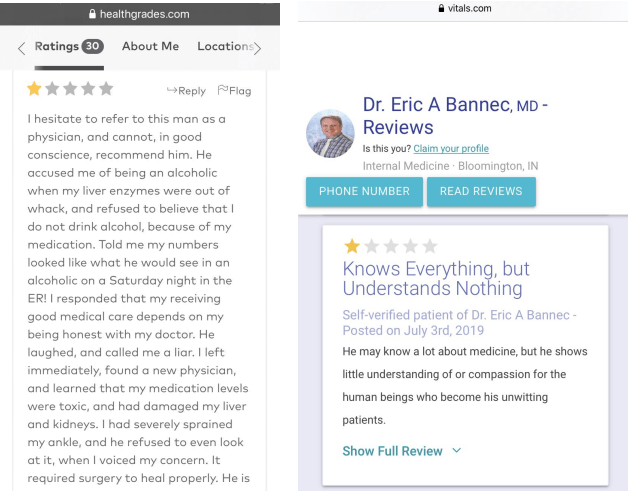
Some netizens think that maybe this is just a medical accident caused by a “bad doctor”, and Susan Moore, who is white, may have the same experience.
However, such voices have been submerged in polarized comments.
Some people accused Moore of overly demanding doctors under his minority status, playing “race cards”, and immediately someone stood up to refute: “We are affected by racial discrimination every day. How can you feel how we feel if you are not black?” The figure below)
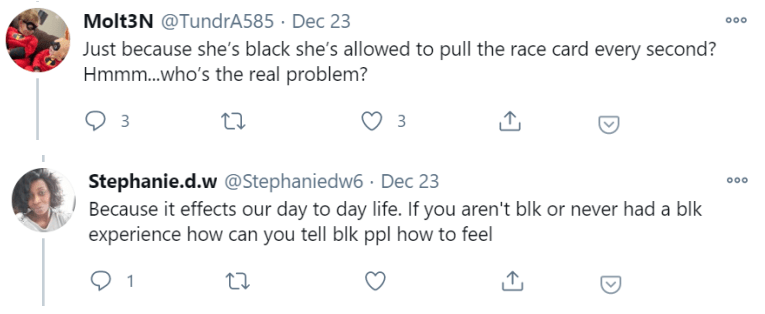
This also proves once again the problem that the current public opinion environment in the United States is polarized, and a little spark can ignite racial antagonism. The real tearing is hidden in people’s hearts, which may be the biggest obstacle to “curing” American society.


